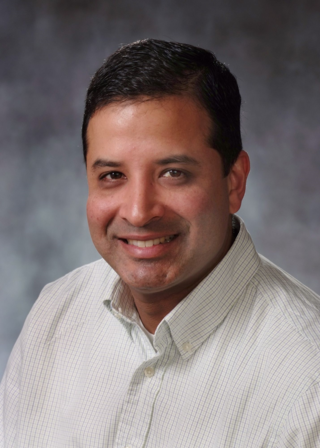
Anil Vachani, MD, director of the Lung Nodule Program and assistant professor of Medicine at the Hospital of the University of Pennsylvania and the Veteran's Administration Medical Center; Attending Physician, Philadelphia Veterans Administration Medical Center.
Lung cancer is the deadliest of all cancers, and cigarette smoking causes 85 percent of all cases. If you are currently a long-term smoker or have smoked for much of your life and recently quit, you are at risk. This, we know.
But, here’s the good news: physicians are now better able to test for lung cancer in smokers.
“We now have the ability to detect and treat lung cancer in its earliest stages, giving patients the best chance at a positive outcome,” says Anil Vachani, MD, director of the Lung Nodule Program at the Paul F. Harron, Jr. Lung Center at Penn Medicine, which tests patients for lung nodules or other lung abnormalities that can lead to cancer.
The National Lung Cancer Screening Trial, a 2011 study published in the New England Journal of Medicine, one of the most influential and impactful medical journals, looked at more than 53,000 smokers and former smokers between the ages of 55 and 74 who each smoked a total of at least 30 pack-years, the number of packs smoked per day multiplied by the number of years smoked. They found that low-dose CT scans could detect lung tumors in the earliest stages and reduce mortality from lung cancer by 20 percent compared to chest X-ray or no screening at all.
This came as welcome news for a community of patients and medical providers who had long searched for a way to detect and impede the progression of this awful cancer. It also changed both policy and practice.
The U.S. Preventative Services Task Force, as well as the American Cancer Society, the American Society of Clinical Oncology and many, many others began to recommend that high-risk patients between the ages of 55 and 80 be screened every year with low-dose CT scans. Many of the large insurance carriers got on board and now cover the screening at no cost to the patient, with Medicare and Medicaid expected to follow suit.
At Penn, our Lung Nodule Program offers low-cost screening to those patients who want to be tested, but whose insurance does not yet cover the procedure. Vachani and colleagues see patients who come to them with a nodule or abnormality or who are at-risk and in need of an initial CT screening, most often referred by their primary care provider.
“Our program has a growing number of success stories of patients who came to us for screening and in whom we located a cancerous lesion. With our program and through the Penn Lung Center, the full spectrum of services, including a follow-up biopsy and surgery, if needed, are readily available,” says Vachani.
The team is also now looking at whether bronchoscopy, a more invasive, but complementary procedure that includes inserting a tube in the nose or mouth and passed down the throat and into the airways in the lungs, could also help detect early cancers in this patient population. It allows for a better look at cancerous or potentially cancerous lesions in the middle of the chest, which can be difficult to view on CT. Patients enrolled in this national clinical trial receive CT scans and bronchoscopy in alternating years.
“With this study, we hope to be able to show an even better way to detect lung cancer,” says Vachani.
Looking to Quit or Help Someone Quit Smoking?
Check out the Comprehensive Smoking Treatment Programs at the Penn Lung Center
The program will offer its second smoking cessation education program for healthcare providers, called Preparing for the Integration of Tobacco Use Treatment into Healthcare, from October 6-10.
The interactive training program for working healthcare professionals is designed to help participants develop skills in tobacco dependence treatment. Participants will deepen their expertise through examination of accepted standards of care, analysis of current research findings, and hands‐on application of tobacco treatment principles.
For more information, visit http://penn-stop.com/WP1/registration-information